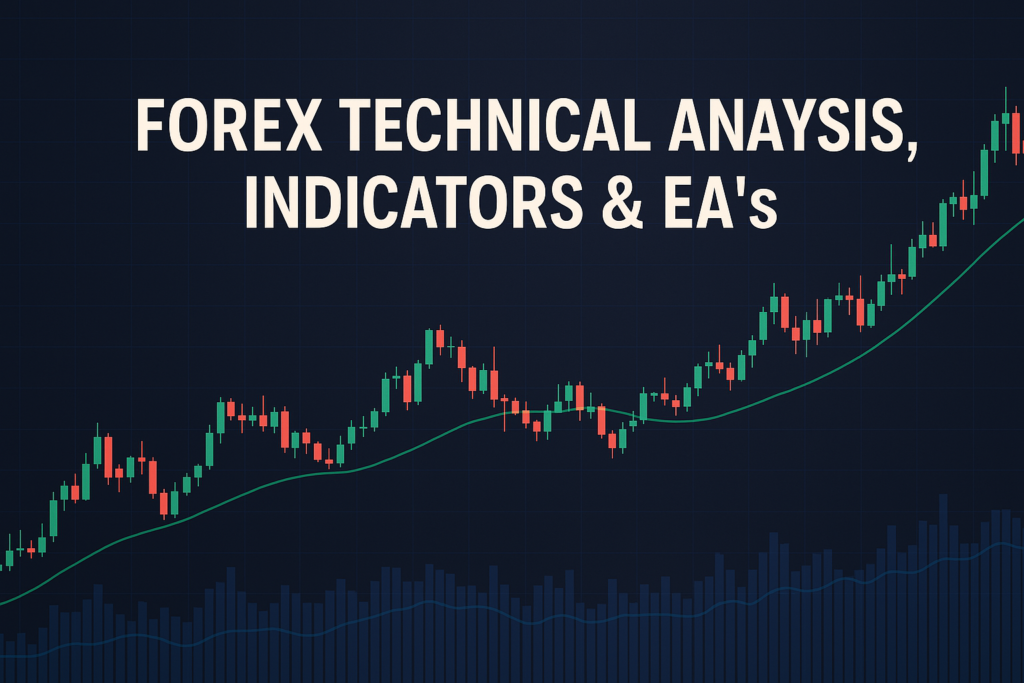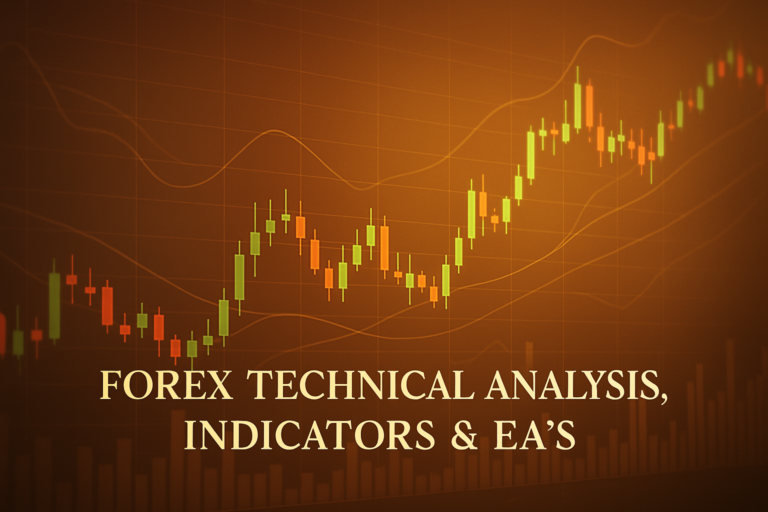
The ADX and DMI indicators are essential tools for Forex traders, helping identify trends and improve trading strategies.
In the world of Forex trading, understanding the tools that help you make decisions is crucial. One such tool is the ADX (Average Directional Index) and its partner, the DMI (Directional Movement Index). These indicators help traders identify the strength and direction of trends, which can be very helpful in making informed trading choices.
However, many traders, whether beginners or seasoned professionals, often struggle with how to effectively use ADX and DMI. They may feel overwhelmed by the complexity of indicators or unsure of how to interpret the signals they provide. Knowing how to apply these indicators can make a significant difference in trading success. This article will guide you through the ADX and DMI, helping you understand their importance and how to use them effectively in your trading strategy.
In this article, we will cover what ADX and DMI are, their history, advantages and disadvantages, how to apply them on MT4 and MT5, trading strategies that use them, and frequently asked questions. We aim to make your journey into using ADX and DMI as smooth as possible.
For those facing issues with their platform, you might have encountered a problem where the mt4 cannot resize chart window. This can be frustrating, but it is essential to focus on resolving these issues to enhance your trading experience.
What is ADX and DMI?
ADX stands for Average Directional Index, and DMI stands for Directional Movement Index. In simple terms, ADX measures the strength of a trend, while DMI shows the direction. Think of it like a compass showing you which way to go and how strong that direction is. If the ADX number is high, it means the trend is strong. If it’s low, the trend is weak.
Types of ADX and DMI
There are different types of ADX and DMI. The most common ones include the Simple, Exponential, and Weighted averages. Each type has its characteristics and can be useful in different trading scenarios. The Simple ADX might be best for beginners, while more experienced traders might prefer the Exponential or Weighted types for more responsive signals.
How ADX and DMI Smooth Out Price Action
ADX and DMI help to smooth out price action by filtering out the noise in the market. They focus on the trend and provide clearer signals. For example, when prices go up and down quickly, it can be hard to see the real trend. But with ADX and DMI, you can see the underlying direction more clearly.
Common Periods Used and Why
Traders often use common periods like 14 days for ADX and DMI. This is because it provides a balanced view of the market’s movements without being too sensitive to sudden changes. Using a longer period might miss quick opportunities, while a shorter period might create too many false signals.
The History of ADX and DMI: How It Became Popular
Origin of ADX and DMI
ADX and DMI were developed by J. Welles Wilder in the late 1970s. Wilder created these indicators to help traders identify trends more effectively. He noticed that many traders struggled to recognize the strength and direction of trends, so he designed these tools to make it easier.
When Did Traders Start Using It Widely?
Over the years, ADX and DMI gained popularity among traders, especially in the 1980s and 1990s. As more traders began to understand the significance of trend analysis, these indicators became essential parts of their trading toolkit. Today, they are widely used in Forex and other markets.
Real-life Stories
Many professional traders have attributed their successes to the use of ADX and DMI. For instance, a trader might have spotted a strong trend using ADX, which helped them make profitable trades, leading to significant earnings. These stories inspire new traders to learn and apply these indicators in their strategies.
Advantages and Disadvantages of ADX and DMI
Advantages
- Helps Identify Trends Easily: With ADX, traders can quickly see if a trend is strong or weak.
- Useful for Dynamic Support and Resistance: ADX can help traders set levels of support and resistance that adjust with the trend.
- Works Well for Crossover Strategies: DMI lines can signal entry and exit points effectively when they cross.
Disadvantages
- lags Behind Price Movements: Since ADX is based on past price movements, it can create a delay in signals.
- Can Give False Signals in Sideways Markets: In a choppy market, ADX may indicate a trend that isn’t really there.
How to Apply ADX and DMI on MT4 & MT5
Step-by-Step Guide to Adding ADX and DMI on Charts
To add ADX and DMI on your MT4 or MT5 platform, first, open your trading chart. Then, navigate to the ‘Insert’ menu, click on ‘Indicators’, and select ‘Trend’ to find ADX. After that, do the same for DMI. This will overlay both indicators on your chart.
Customizing ADX and DMI Settings
You can customize the settings of ADX and DMI to suit your trading style. For example, you can change the periods, colors, and types of the indicators to make them more visible and easier to read. This personalization can help you spot trends more effectively.
Saving Templates for Easy Application
Once you have set up your ADX and DMI indicators the way you like them, you can save this as a template. This way, you won’t have to set them up again for future charts. Just right-click on your chart, choose ‘Template’, and then ‘Save Template’. It’s a time-saver!
5 to 7 Trading Strategies Using Only ADX and DMI
All Time Frame Strategy (M5 to D1)
This strategy works across multiple time frames. The key is to look for an ADX above 25, indicating a strong trend. Buy when the DMI lines cross with the +DMI above -DMI. Sell when the opposite occurs. For example, if you spot this on an H1 chart, you can place a trade for the next few hours.
Trending Strategies
For trending strategies, wait for the ADX to rise above 20. This suggests that a strong trend is forming. When the +DMI line crosses the -DMI from below, it’s a buy signal. Conversely, when -DMI crosses above +DMI, it’s a sell signal. For instance, if you’re trading the EUR/USD, you might enter a buy position when you see this crossover.
Counter Trade Strategies
In counter-trading, you look for reversal points. When the ADX is below 20, it indicates a weak trend. You can use this to your advantage. If you see the DMI lines crossing, it may signal a potential reversal. For example, if the market is trending down and you see a crossover, it might be time to buy.
Swing Trades Strategies
Swing trades are all about capturing short-term movement. Use ADX to identify strong trends and take trades within those trends. If the ADX is above 25 on a daily chart, look for buy entry points when the DMI lines confirm the uptrend. An example could be buying at a pullback within a strong upward trend.
5 to 7 Trading Strategies Combining ADX and DMI with Other Indicators
All Time Frame Strategy (M5 to D1)
Combine the ADX and DMI with Moving Averages for a powerful strategy. When the ADX is above 25 and the price crosses above the Moving Average, it’s a buy signal. For example, if the price of USD/JPY crosses above the 50-period MA, you can enter a buy trade.
Trending Strategies
Using Bollinger Bands along with ADX can enhance your trading. If the ADX is rising and the price touches the lower Bollinger Band, it indicates a potential buying opportunity. Conversely, if the price hits the upper band with a rising ADX, it may signal a sell. This strategy can be especially effective in volatile markets.
Counter Trade Strategies
Combining ADX with the RSI (Relative Strength Index) can help in counter-trading. When the ADX is below 20 and the RSI indicates overbought conditions, it might be wise to look for sell signals. This combination can give you a clearer picture of potential reversals.
Swing Trades Strategies
By using Fibonacci retracement levels with ADX and DMI, you can identify key levels for swing trades. If the ADX indicates a strong trend and the price retraces to a Fibonacci level, this might provide a good entry point. For instance, after a bullish trend, if the price retraces to the 61.8% Fibonacci level with a strong ADX reading, it could be a good time to buy.
Commodity Channel Index (CCI)
Another useful indicator to consider is the Commodity Channel Index (CCI). CCI can help confirm signals from ADX and DMI, creating a more robust trading strategy.
Top 10 FAQs About ADX and DMI
1. What does ADX measure?
ADX measures the strength of a trend. A higher ADX value indicates a stronger trend, while a lower value shows a weaker trend.
2. How do I know when to enter a trade using ADX and DMI?
Look for crossovers between the +DMI and -DMI lines along with a rising ADX. This indicates a clear trend direction and strength.
3. Can ADX be used in all markets?
Yes, ADX can be applied in Forex, stocks, commodities, and more. It is versatile and adapts well to various trading environments.
4. What is the best period for ADX?
Many traders use a 14-period ADX for a balanced view, but you can experiment with different periods to find what works best for your strategy.
5. Does ADX work in sideways markets?
Not effectively. ADX can give false signals when the market is ranging. It’s best used in trending markets for optimal results.
6. How can I customize ADX settings?
You can adjust the period, color, and style of ADX in your trading platform’s indicator settings to match your preferences.
7. Can I use ADX with other indicators?
Absolutely! Combining ADX with indicators like Moving Averages or RSI can enhance your trading strategy and provide more confirmation.
8. What does a high ADX value indicate?
A high ADX value (above 25) indicates a strong trend, whether it’s upward or downward.
9. What does a low ADX value indicate?
A low ADX value (below 20) suggests a weak trend, meaning the market is likely moving sideways.
10. Is ADX suitable for beginners?
Yes, ADX is user-friendly and can help beginners understand trend strength and direction, making it a great starting point for new traders.
Conclusion
In summary, understanding ADX and DMI can significantly improve your trading strategies. These indicators provide valuable insights into trend strength and direction, which are essential for making informed trading decisions. Remember to practice using ADX and DMI in a demo account before risking real money.
As you explore these indicators, test different strategies and find what works best for you. Each trader is unique, and what suits one may not suit another. Embrace the learning journey and enjoy the process of mastering ADX and DMI!
For a more comprehensive breakdown, see what experts at [Source] say Myfxbook, Kiplinger
Expand Your Knowledge
- 📌 Forex Trading Learning Road Map
- 📌 Forex Trading Course with no Fees
- 📌 Forex Trading Issues, Problems, and Solutions
- 📌 Forex Daily Forecast & Live Updates
- 📌 Forex Fundamental & News Analysis: Tomorrow’s Market Movers & Trade Opportunities
- 📌 Forex Education Hub: Learn & Profit
- 📌 Forex Technical Analysis, Indicators & EA’s
Start Trading Today
Ready to take your forex trading to the next level? Open an account with Exness, one of the most trusted platforms in the industry. 👉 Sign Up Now and trade with confidence!
My recommended broker stands out with ultra-low spreads for beginners, instant withdrawals, and zero spread accounts for pro traders.
Trusted since 2008, lightning-fast execution, no hidden fees, and a secure, transparent trading environment—giving you the edge you need to succeed. 🚀
YouTube Video Library: Related Videos
Note: The video above is embedded from YouTube and is the property of its original creator. We do not own or take responsibility for the content or opinions expressed in the video.



